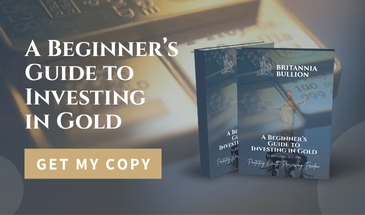Middle East on the Brink, the fuse is lit
The world has changed. Again.
Just months after markets began to breathe a sigh of relief following cooling inflation and talk of rate cuts, the Middle East has reignited, and this time, the fuse is shorter and the stakes are far higher.
The recent escalation between Israel and Iran marks a dangerous new phase in global instability. For investors, savers, and policymakers alike, the next few weeks could shape not only foreign policy but portfolios.
So, how might this unfold? And what does it mean for the price of gold?
Where Are We Now?
In recent days, Israel has launched targeted naval and airstrikes on Iranian-linked assets in Syria, Lebanon, and, in a dramatic first, the Houthi-held port of Hodeidah in Yemen. Meanwhile, Iran has threatened to retaliate, with intelligence sources warning of preparations for direct or proxy attacks against Israeli or Western targets.
This isn’t tit-for-tat anymore. This is a strategic confrontation, dragging in:
-
The US and UK, with naval fleets stationed in the region
-
Saudi Arabia and Gulf states, balancing alliances and oil interests
-
Hezbollah, Houthis, and Iraqi militias, acting as proxies for Tehran
-
And crucially, global markets, which are now on edge
Likely Escalation Scenarios
1. Proxy War Intensifies
Iran ramps up attacks via Hezbollah or Houthis. Israel responds forcefully. Risk remains “contained,” but oil and shipping markets tighten further.
2. Direct Iran–Israel Conflict
If either side crosses a red line (e.g., bombing nuclear facilities, assassinations), a regional war could erupt, triggering global panic.
3. Strait of Hormuz Closure
Iran has already threatened to block the Strait of Hormuz, the world’s most critical oil chokepoint. Even a partial disruption could send oil to $150+/barrel.
4. Cyber or Terrorism Spillover
Cyberattacks on Western infrastructure or oil companies and potential coordinated unrest in major cities are highly likely.
Market Fallout: Energy, Inflation, and Interest Rates
Oil Spikes
-
Even minor disruptions could cause oil prices to surge 20–40%
-
Inflation would rebound sharply, just as central banks hoped to pivot to rate cuts
Inflation Returns
-
Rising energy, transport, and food costs ripple through economies
-
Central banks face the nightmare: stagflation (rising prices + slowing growth)
Interest Rates Stay High
-
Hopes of rate cuts vanish
-
Debt repayments soar
-
Stock markets wobble
And Gold? Gold Shines in Chaos.
This is where gold comes into its own.
What Drives Gold Higher in Conflict?
-
Flight to Safety, As global assets wobble, gold becomes the go-to refuge
-
Dollar Volatility, Geopolitical tension weakens the dollar, strengthening gold
-
Real Interest Rates Fall, If inflation rises faster than interest rates, gold soars
-
Physical Demand Spikes, In times of fear, investors want real assets
What Could Gold Do?
Gold is already trading near £2500 oz (GBP) and $3380 oz (USD).
In the event of:
-
A Hormuz disruption or significant escalation → Gold could break £2700
-
A whole regional war or financial shock → £3000 + becomes realistic
This wouldn’t be speculation, it would be history repeating itself. Every major war or crisis in the past 50 years has sent gold soaring.
Final Thought: Risk Is Rising, and So Is Gold’s Relevance
We are entering a dangerous, unpredictable geopolitical cycle. The idea that conflict is “contained” or inflation “under control” feels increasingly naïve. In this kind of environment, holding cash in a low-interest account or relying on bonds doesn’t cut it.
Gold doesn’t rely on promises. It relies on history. And history tells us: when the world wobbles, gold stands firm.
|
Co-Founder
Precious Metals Analyst
Britannia Bullion
|
|
||||||||
 |
|||||||||
| Britannia Bullion is part of Montford Group Ltd, registered in England & Wales under Company Number: 16332341. Gold Bidder does not provide financial or investment advice. The information in this email is for informational purposes only and should not be considered as financial, investment, or legal advice. We strongly recommend consulting an independent financial adviser before making any investment decisions. Any actions taken based on the content of this message are solely at the recipient’s discretion, and no reliance should be placed on any statements outside of official company documentation. This email, including any attachments, is confidential and intended solely for the named recipient. If you are not the intended recipient, you must not copy, distribute, or take any action based on its contents. Please notify the sender immediately and delete this email if received in error. While we take reasonable precautions to ensure that this email and any attachments are free from viruses or other harmful components, we accept no liability for any damage caused by their receipt or use. The recipient remains responsible for their own cybersecurity measures. | |||||||||

